ZEN IRODALOM ZEN LITERATURE
« Zen index
« Home
十牛圖 Shiniu tu [Jūgyūzu]
The Ten Oxherding Pictures
Introduction and verse by 廓庵師遠 Kuoan Shiyuan [Kakuan Shien], 12th
century
Poems translated by Urs App
(1949-)
With Japanese woodcut prints, 1689
http://iriz.hanazono.ac.jp/frame/data_f00c.en.html
The pictures of this series
are of Japanese origin (1689; courtesy of Michel Mohr).
The poems are by the Chinese Zen master Kuoan (jap. Kakuan).
The English translation of the poems is © by Urs App (1996)
Contents
I. Introduction by Urs App
II. The ten pictures with master Kuoan's poems
1. Looking for the Ox
2. Noticing the Footprints
3. Catching Sight
4. Getting Hold of the Ox
5. Taming the Ox
6. Riding home
7. Ox vanished, herdsman remaining
8. Ox and herdsman vanished
9. Returning to the Source
10. Entering the Marketplace
I. Introduction to the Ten Oxherding
Pictures
by Urs App
The protagonist of this poetic picture story, a boy herdsman, stands for none
other than you, dear reader. It is the very "I" that reads these
lines through a pair of eyes, the subject of your life, the protagonist of
that unique story that is yours. It is what thinks your thoughts, makes your
plans, has your desires, and signs your checks: it is what was born of your
parents and will die on your deathbed.
This "I"
is also the starting point of the Zen Buddhist quest.
When a Chinese man called Huike, according to a Zen story, met Bodhidharma,
the following conversation ensued:
" Huike: "Please, Master, bring peace to my heart-mind!" Bodhidharma:
"Show it to me, and I will pacify it!" Huike: "I have searched
for it, but I could not find it." Bodhidharma: "If you could search
for it, how could it be your very own heart-mind?"
In Zen Buddhism, the injunction "show me your self" has a particular
ring, as the root-source of man's basic dissatisfaction and the engine of
his striving is none other than this "I". The Japanese Zen master
Bankei, for example, diagnosed the basic human problem as follows:
" Your self-partiality is at the root of all your illusions. There aren't
any illusions when you don't have this preference for yourself.
Rather than being the goal of man's quest, Zen thus sees the "I"
as the very problem. Thus the herdsman, who has an "I" just as all
of us do, sets out in search of what he truly is.
The object of this search, man's true self, is represented by an ox or buffalo.
The quest extends from the seeing of faint traces (picture
2) to the thorough overcoming of the problematic "I" with all of
its objects (including the ox; picture 8) - and to the emergence of nature
as it truly is (9).
In the Indian Upanishads,
the highest spiritual goal is the realization that one's own true self, one's
atman, is nothing other than the very essence of everything, i.e., brahman.
"Tat tvam asi", "That thou art," is its expression.
In terms of the present classic of Zen literature, the Ten Oxherding Pictures,
that means: your true self, what you really are without realizing it, is nothing
other than that ox and that flower, or your neighbor. Thus the true man in
picture 10 is not aloof from the world but rather right here, in the bustle
of the marketplace.
II. The ten pictures with master Kuoan's poems
1. Looking for the
Ox
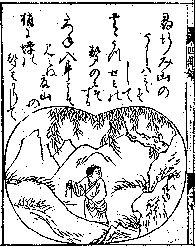
Pushing aside the weeds of illusion
He looks for the ox in the wild
Through swollen rivers and distant mountains
His path leads far and farther
His strength exhausted, he's in despair
There's no more place to search
Yet hear that lonely autumn song:
Cicada in a maple tree.
2. Noticing the Footprints
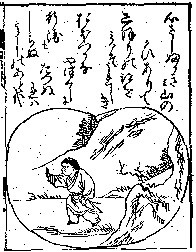
By a river, among the trees
Footprints here and there!
Wild thickets, weeds-or did he now
Just catch a glimpse of it?
Deep into the mountains
His path leads far astray.
Its nose may reach the heavens
Yet would it leave no trace?
3. Catching Sight
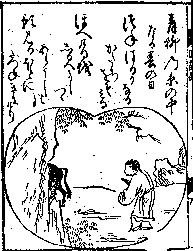
The song of a nightingale, listen!
It's perching on a branch
Warm sunrays and a soothing breeze
Green willows on the bank.
Ah, there!
No way to overlook it,
Majestic horns, a stately head:
A challenge for a painter.
4. Getting Hold of
the Ox
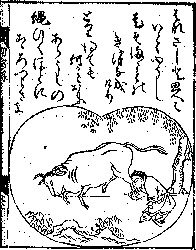
Everything and all he gives,
And gets to catch the ox
What strength of will, what power-
Too tough to shed at once
At times it suddenly struts
Up, up to higher plains
To hide in mist and clouds
And rest in deep ravines.
5. Taming the Ox
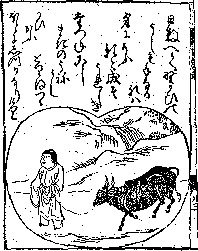
Not letting go of tether and whip
Not even for a moment
He's careful to not lose his way
In the dirt and dust of the world.
Well tended and domesticated
The ox grows pure and gentle;
Without a chain and bridles
It trails its master just so.
6. Riding home
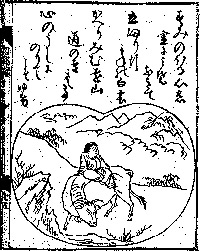
Riding high on the ox
He leisurely turns toward home
The sing-song of his flute
Vanishing in the evening glow
Each beat, each note
Full of infinite meaning
When one is in tune with the other
No need for chat and blabber.
7. Ox vanished, herdsman
remaining
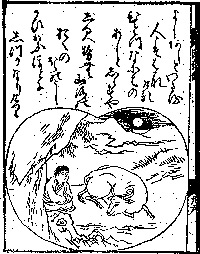
Astride his ox at last he reaches
The mountains and hills of home.
No more ox!
The man is serene.
Yet though the sun stands high above
He still is dreaming the dream
While whip and tether lie idle
In that thatched-roofed abode of his.
8. Ox and herdsman
vanished
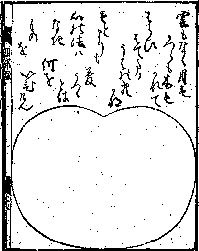
Whip, tether, person, ox:
ALL IS EMPTY!
Blue sky, all and all around:
What is there to convey?
How to keep a flake of snow
Atop a red-hot oven?
Get there and you do accord
With the founders of our school.
9. Returning to the
Source
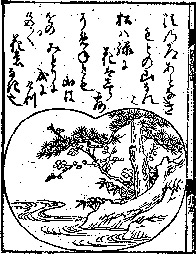
Returning to the root and source:
Oh what a waste of effort!
Much better to turn blind and deaf
Right at this very moment!
Inside his hut, he does not see
Any object, nothing, outside:
Rivers flow onward by themselves
And blossoms turn crimson like that.
10. Entering the Marketplace
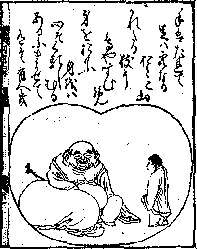
Bare-chested and with naked feet
He bursts into the market
Full of dirt and ashes
His face one big wide grin.
No need for magic potions
From adepts and immortals:
He simply lets a withered tree
Erupt in blazing bloom.